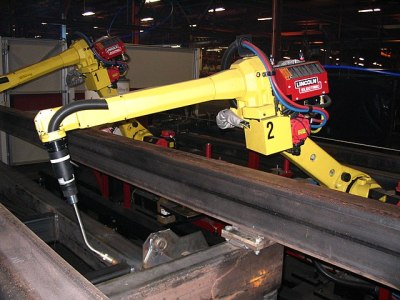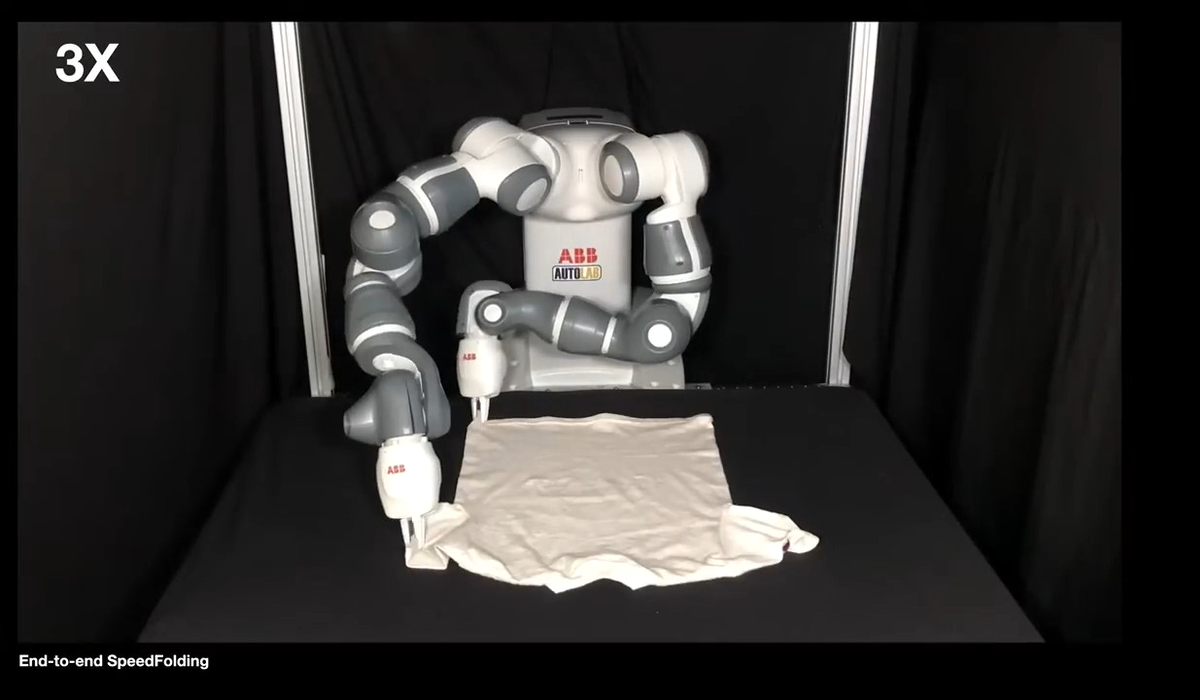Robots fold laundry, but they suck it
Robots are used in all sorts of industries for a wide variety of tasks. Usually it's because they are much faster, more accurate and more capable than us. Expert humans couldn't match the constant, rapid production of a robot welder on an automotive production line, or so delicately smear chocolate on the back of a KitKat.
However, there are some tasks in which humans still have the advantage. These include driving, witty repartee and, yes, folding laundry. That's not to say bots don't try, so let's take a look at the state of the art.
The challenges of folding at home Robots are great for jobs with simple, repetitive movements. They are less good at jobs where they have to figure out what the right moves are. Credit: Phasmatisnox, CC-BY-SA-3.0
Robots are great for jobs with simple, repetitive movements. They are less good at jobs where they have to figure out what the right moves are. Credit: Phasmatisnox, CC-BY-SA-3.0Laundry automation was a game-changer for home living when it entered the mainstream. The washboard and mangle gave way to the automatic washer and dryer, and the busy workers of the world rejoiced. They wouldn't work for hours just to get clean clothes anymore!
However, the next step in the process, folding, has yet to see mainstream automation. This is largely due to the fact that folding laundry is simply a much more complicated task than washing or drying. These tasks simply involve throwing a pile of clothes into a tub and shaking them out with soap and water or applied heat. This is a batch process with the primary control input being the RPM of a single motor.
Folding first requires that a single piece of laundry be separated from the bundle and identified. Computer vision has come a long way in the past decade, but it's still a difficult task. Additionally, clothes can get tangled with each other in a pile, further complicating the issue of a hypothetical robot folder. Towels, socks, skirts and jeans are all different and require their own techniques to process. Fancy clothes with straps and buckles and unique structures only add more challenges.
State of the artResearchers at UC Berkeley and the Karlsruhe Institute of Technology have developed a robot that can fold laundry so quickly they call the process "SpeedFolding". It uses a robot with two “hands” that work together to fold clothes, much like we do. According to the research paper, the team claims that the robot can fold 30 to 40 garments in an hour. This is roughly an order of magnitude faster than previous robotic folding efforts, which achieved superior folding times on the order of 3-6 folded garments per hour.
The robot starts by scanning the laundry to be folded with an aerial camera. It then uses a neural network trained on 4,300 different actions to identify how to get the randomly aligned garment into the initial state needed for folding. Various movements are used by the robot to achieve this, including moving the garment or parts of the garment, f...

Robots are used in all sorts of industries for a wide variety of tasks. Usually it's because they are much faster, more accurate and more capable than us. Expert humans couldn't match the constant, rapid production of a robot welder on an automotive production line, or so delicately smear chocolate on the back of a KitKat.
However, there are some tasks in which humans still have the advantage. These include driving, witty repartee and, yes, folding laundry. That's not to say bots don't try, so let's take a look at the state of the art.
The challenges of folding at home Robots are great for jobs with simple, repetitive movements. They are less good at jobs where they have to figure out what the right moves are. Credit: Phasmatisnox, CC-BY-SA-3.0
Robots are great for jobs with simple, repetitive movements. They are less good at jobs where they have to figure out what the right moves are. Credit: Phasmatisnox, CC-BY-SA-3.0Laundry automation was a game-changer for home living when it entered the mainstream. The washboard and mangle gave way to the automatic washer and dryer, and the busy workers of the world rejoiced. They wouldn't work for hours just to get clean clothes anymore!
However, the next step in the process, folding, has yet to see mainstream automation. This is largely due to the fact that folding laundry is simply a much more complicated task than washing or drying. These tasks simply involve throwing a pile of clothes into a tub and shaking them out with soap and water or applied heat. This is a batch process with the primary control input being the RPM of a single motor.
Folding first requires that a single piece of laundry be separated from the bundle and identified. Computer vision has come a long way in the past decade, but it's still a difficult task. Additionally, clothes can get tangled with each other in a pile, further complicating the issue of a hypothetical robot folder. Towels, socks, skirts and jeans are all different and require their own techniques to process. Fancy clothes with straps and buckles and unique structures only add more challenges.
State of the artResearchers at UC Berkeley and the Karlsruhe Institute of Technology have developed a robot that can fold laundry so quickly they call the process "SpeedFolding". It uses a robot with two “hands” that work together to fold clothes, much like we do. According to the research paper, the team claims that the robot can fold 30 to 40 garments in an hour. This is roughly an order of magnitude faster than previous robotic folding efforts, which achieved superior folding times on the order of 3-6 folded garments per hour.
The robot starts by scanning the laundry to be folded with an aerial camera. It then uses a neural network trained on 4,300 different actions to identify how to get the randomly aligned garment into the initial state needed for folding. Various movements are used by the robot to achieve this, including moving the garment or parts of the garment, f...
What's Your Reaction?






















